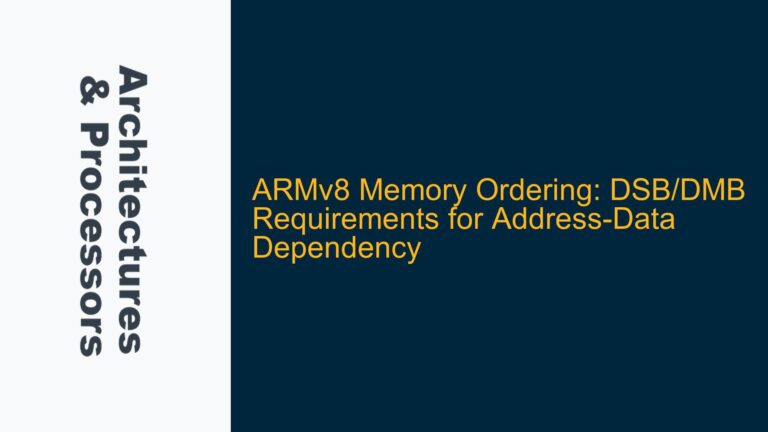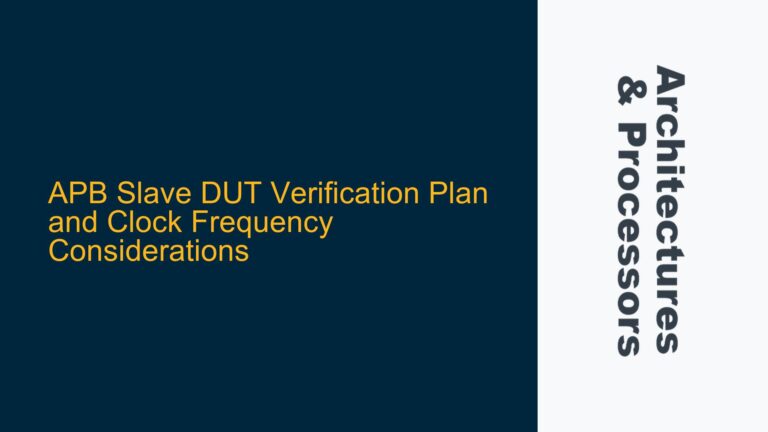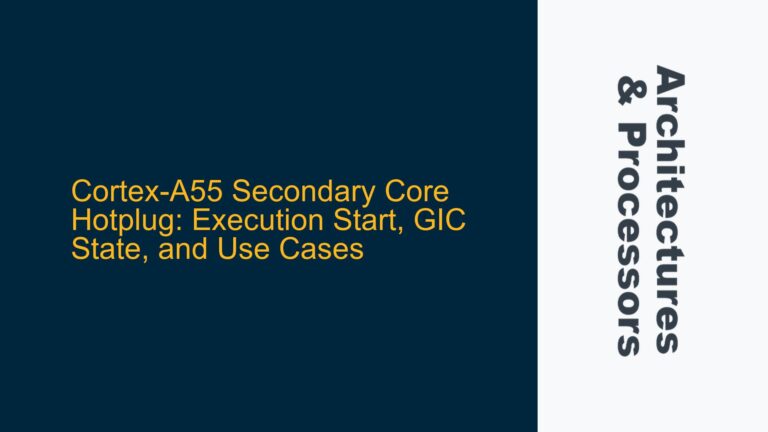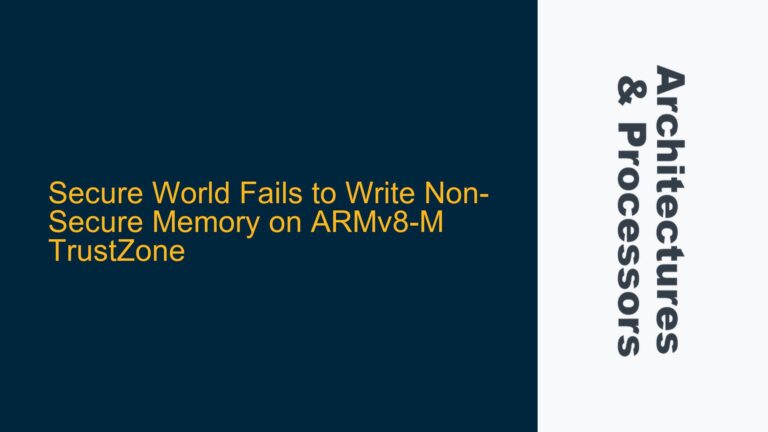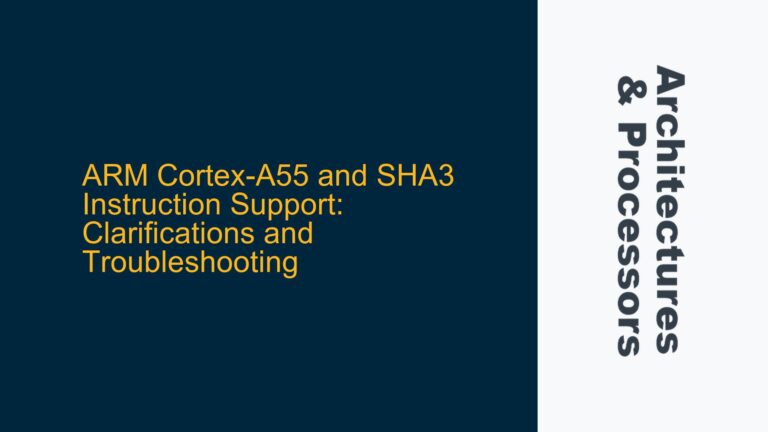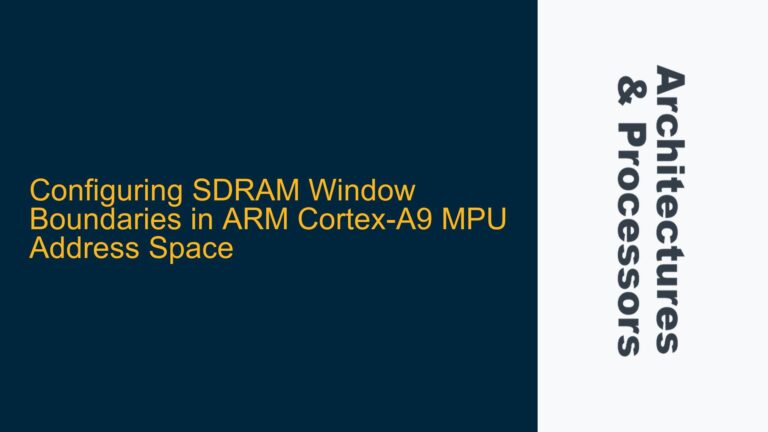ARM Cortex-M33 Exception Handling Issue During FreeRTOS Task Restoration
The issue at hand revolves around the vRestoreContextOfFirstTask function in FreeRTOS running on an ARM Cortex-M33 processor. The problem manifests when attempting to jump to EXC_RETURN (0xFFFFFFBC), which results in an exception. This issue is critical as it prevents the system from correctly restoring the context of the first task, thereby halting the OS from functioning as intended. The core of the problem lies in the interaction between the FreeRTOS task management mechanism and the ARM Cortex-M33’s exception handling architecture, particularly concerning the EXC_RETURN value and its correct usage during context switching.
The ARM Cortex-M33 processor, being part of the ARMv8-M architecture, introduces several features such as TrustZone for ARMv8-M, which adds complexity to exception handling and context switching. The EXC_RETURN value is a special value loaded into the Link Register (LR) upon exception entry, which dictates the behavior of the processor upon exception return. Incorrect handling of this value can lead to exceptions, as observed in this scenario. The issue is further compounded by potential misconfigurations in the FreeRTOS port for Cortex-M33, particularly when the Memory Protection Unit (MPU) is not enabled (configENABLE_MPU == 0).
Misconfigured EXC_RETURN Value and Stack Frame Restoration
The primary cause of the exception during the execution of vRestoreContextOfFirstTask is the incorrect handling of the EXC_RETURN value. The EXC_RETURN value is crucial for determining the processor’s state upon returning from an exception. In the ARMv8-M architecture, this value not only dictates whether the processor returns to Thread or Handler mode but also whether it returns to Secure or Non-secure state. The value 0xFFFFFFBC corresponds to a return to Thread mode using the Main Stack Pointer (MSP) in Non-secure state. However, if the system is misconfigured or if the stack frame is not correctly restored, this value can lead to an exception.
Another significant cause is the incomplete restoration of the stack frame when the MPU is not enabled. The FreeRTOS port for Cortex-M33 may not correctly pop all necessary registers from the stack before attempting to return from the exception. This incomplete restoration can corrupt the EXC_RETURN value, leading to an exception when the processor attempts to use this value to return to the task’s context. This issue is particularly evident when configENABLE_MPU is set to 0, as the portasm.s file may not account for all necessary register restorations in this configuration.
Additionally, the interaction between FreeRTOS and the ARM Cortex-M33’s TrustZone security features can introduce further complications. If the system is intended to run in Non-secure state but the EXC_RETURN value is incorrectly configured for Secure state, or vice versa, this mismatch can lead to exceptions. The complexity of the ARMv8-M architecture, with its dual-state operation (Secure and Non-secure), requires careful handling of the EXC_RETURN value to ensure correct context switching.
Correcting EXC_RETURN Handling and Ensuring Complete Stack Frame Restoration
To resolve the exception issue during the execution of vRestoreContextOfFirstTask, several steps must be taken to ensure correct handling of the EXC_RETURN value and complete restoration of the stack frame. The first step is to verify the EXC_RETURN value being used. The value 0xFFFFFFBC is correct for returning to Thread mode using the MSP in Non-secure state, but this must be confirmed based on the system’s configuration. If the system is intended to run in Secure state, the EXC_RETURN value must be adjusted accordingly. The ARMv8-M Architecture Reference Manual provides detailed information on the correct EXC_RETURN values for different configurations.
The next step is to ensure that the stack frame is correctly restored before attempting to return from the exception. This involves verifying that all necessary registers are popped from the stack in the correct order. When configENABLE_MPU is set to 0, the FreeRTOS portasm.s file must be reviewed to ensure that all registers are correctly restored, even if the MPU is not enabled. This may involve modifying the portasm.s file to include additional register restorations that are omitted in the current implementation.
Furthermore, the interaction between FreeRTOS and the ARM Cortex-M33’s TrustZone features must be carefully managed. If the system is intended to operate in Non-secure state, the EXC_RETURN value must be configured accordingly, and any Secure state operations must be correctly handled to prevent state mismatches. This may involve modifying the FreeRTOS port to correctly handle the transition between Secure and Non-secure states, particularly during context switching.
In addition to these steps, it is essential to enable debugging features to trace the execution of the vRestoreContextOfFirstTask function and identify any discrepancies in the stack frame restoration or EXC_RETURN handling. This can be achieved using a debugger with support for ARM Cortex-M33, such as ARM DS-5 or Keil MDK. By setting breakpoints and examining the stack contents and register values, it is possible to pinpoint the exact location where the exception occurs and identify any incorrect configurations or missing register restorations.
Finally, it is recommended to consult the FreeRTOS documentation and the ARMv8-M Architecture Reference Manual for detailed guidance on context switching and exception handling in the ARM Cortex-M33. These resources provide valuable insights into the correct implementation of task management and exception handling mechanisms, ensuring that the system operates as intended without encountering exceptions during context restoration.
By following these steps, the issue of exceptions during the execution of vRestoreContextOfFirstTask can be resolved, allowing FreeRTOS to correctly restore the context of the first task and operate smoothly on the ARM Cortex-M33 processor.

